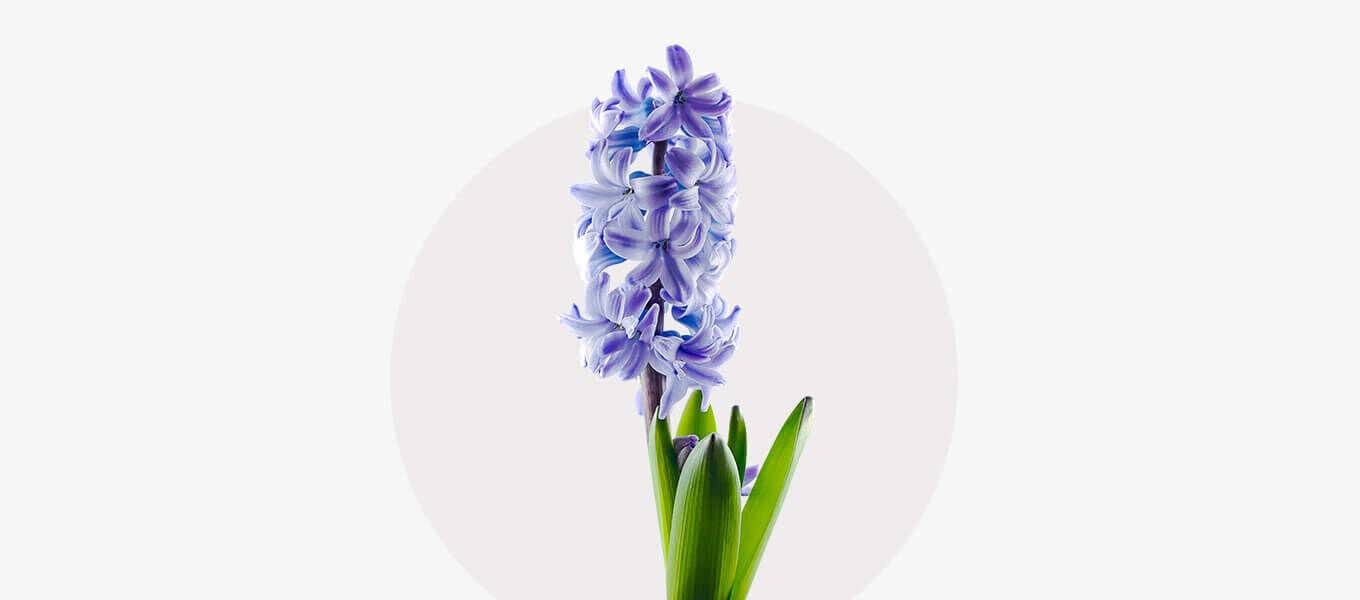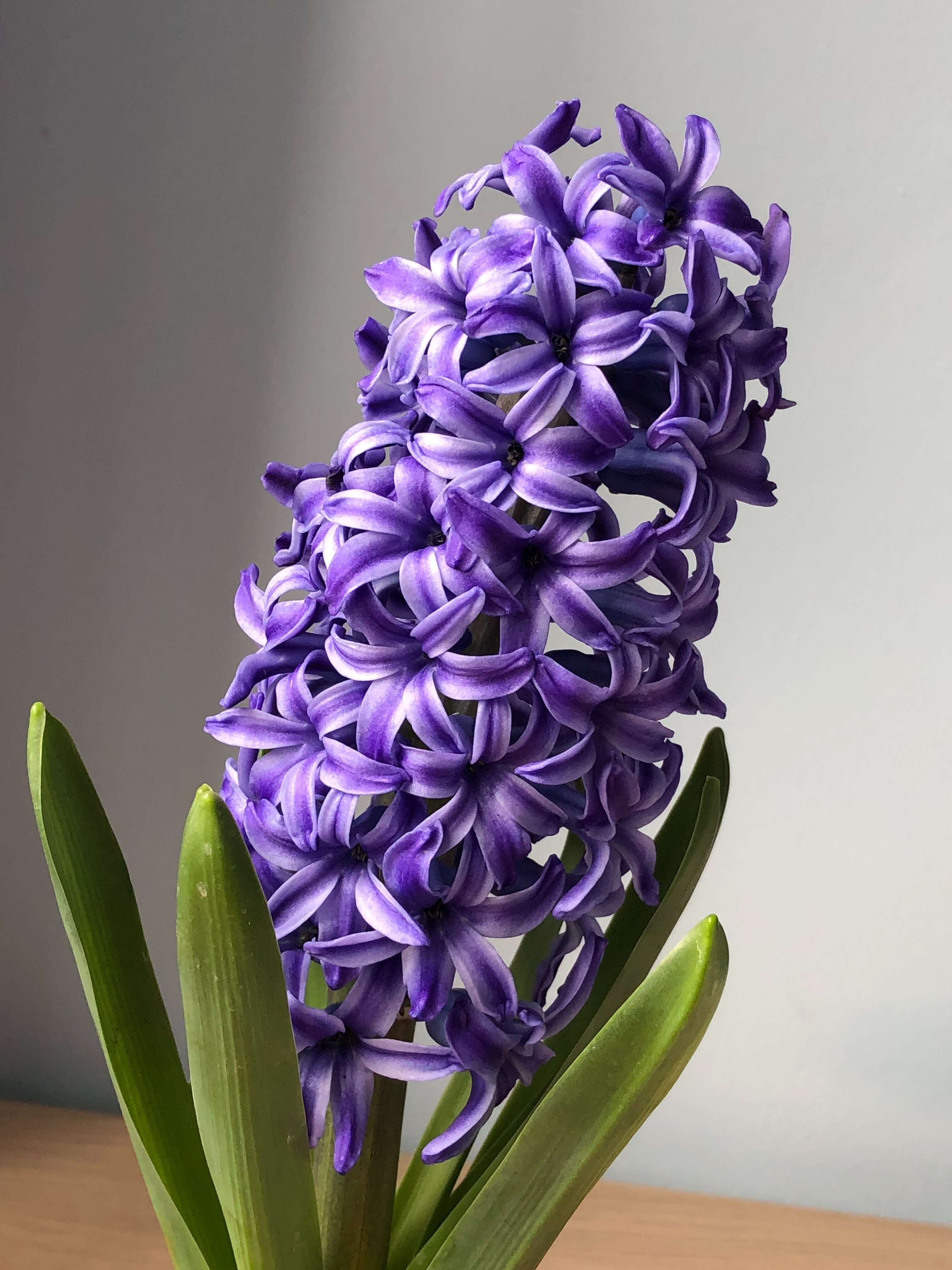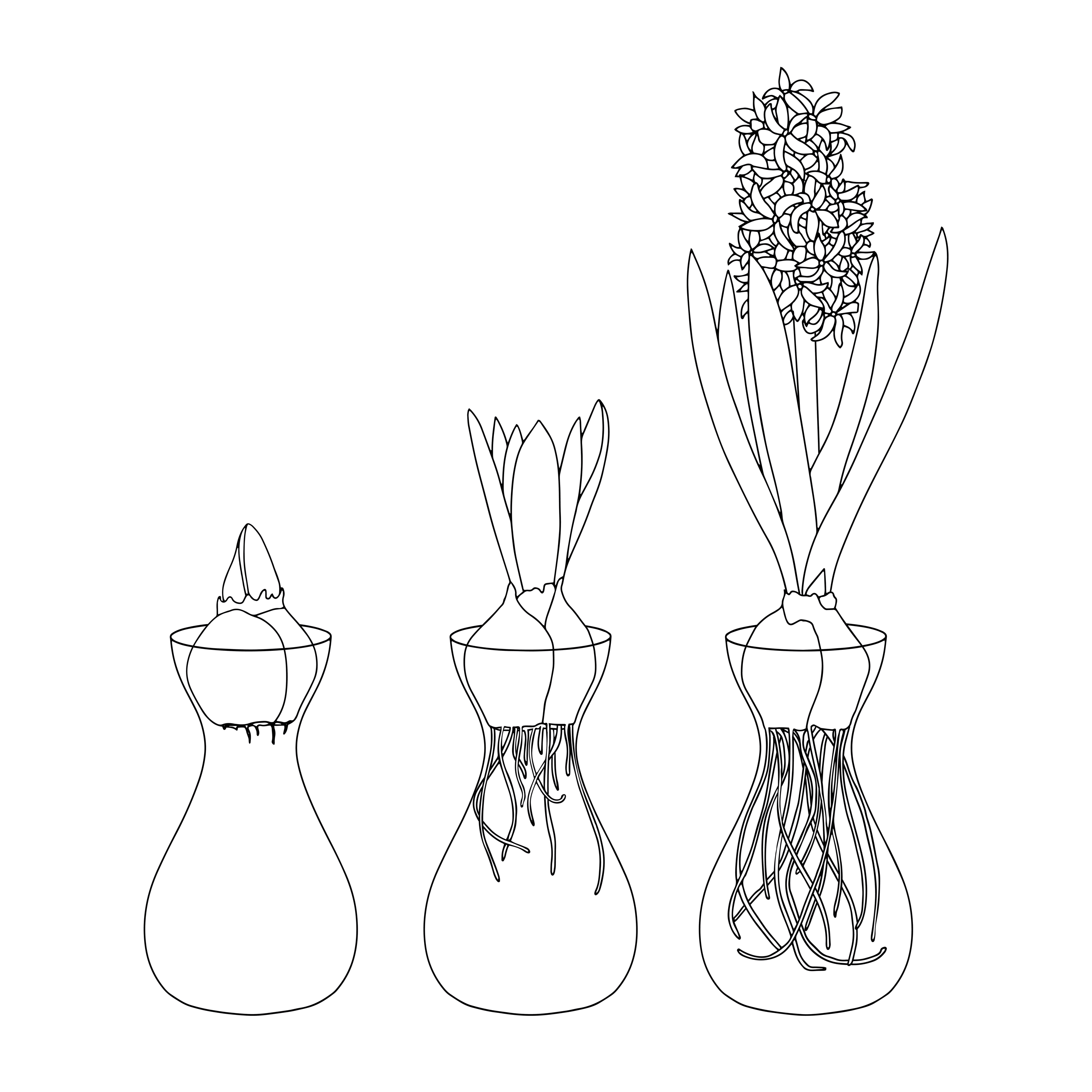Hyacinths – origin & care tips

When most people think of hyacinths - botanically Hyacinthus - they first think of the intense fragrance of these bulbous flowers, then of their intense flower colour and the large flower clusters. While hyacinths, which rank third after tulips and daffodils among bulb flowers, always cut a fine figure indoors, they sometimes fail to show themselves in the right light in the garden. This is due to too much moisture in winter. Once you have mastered this problem, a sea of fragrant flowers opens up in spring. Below you can find out all about this spring flower, its flowering time, how to overwinter hyacinths and everything you need to know about caring for them.
The origin of the hyacinth
Hyacinths come from the Orient. The fragrant varieties we are familiar with are descended from Hyacinthus orientalis. The bulbous flowers came to Europe in the 16th century. Since the 18th century, breeders have produced numerous varieties with large flowers from many crosses and selections. In the past, onions were traded like gold and were considered a luxury. Their name comes from Greek mythology. Hyakinthos was a beautiful youth who was accidentally killed by Apollo. From the blood that flowed out onto the earth, Apollo grew a flower, which he named after his dead friend. Today there are around 200 different varieties. Their flower colours range from white and cream to pink, red, blue and violet. Unusual colours such as apricot or light and dark yellow can also be found on the market. Some hyacinths form dense inflorescences with large flowers, others grow more loosely.
In addition to Hyacinthus orientalis, there are two other species: Hyacinthus litwinowii and Hyacinthus transcaspicus, an ornamental plant with blue flowers that is not cultivated. Hyacinthus litwinowii originates from Turkmenistan and northern Iran. It resembles the wild form of Hyacinthus orientalis, but has only two to three leaves, which are 15 to 17 cm long and up to 5 cm wide. Its growth is somewhat more spreading. The loose inflorescences bear unscented, light blue flowers with petals that are folded backwards. The flower tube is darker than the petals. Hyacinths with the suffix "multiflora" are bulb flowers with more than one inflorescence per bulb. However, the individual flower stems then have fewer flowers.
Hyacinths are categorised as slightly poisonous because they contain salts of oxalic acid and saponins. The bulbous flowers can cause allergic reactions in humans and their scent can trigger headaches. Pets such as dogs, cats, rodents and birds should also be kept away from hyacinths. This applies in particular to the bulbs. When cutting hyacinths, you should immediately wash the sap off the knife and avoid skin contact if possible.

Appearance & flowering time of hyacinths
The main flowering period of the hyacinth is in April and May.
Growth
Overall, the hyacinth grows to a height of around 15 to 30 cm. A sturdy flower stalk grows from the leaf head. While the inflorescence slowly emerges from the bulb as early as February, all ornamentation is over after flowering and the vegetation cycle is usually completed in July when the leaves dry out. Hyacinths only flower once a year, so the individual bulb is not perennial. However, as they reproduce by forming daughter bulbs, the plant as a whole can be classified as perennial.
Leaves
The leaves of hyacinths are bright green, long (around 20 to 30 cm) and narrow and appear quite fleshy. They develop with the flower, die back after flowering and dry out.
Flowers
The tubular petals of hyacinths develop on a thick stem as small racemes, which are usually very fragrant. They shine in different flower colours between March and May. After flowering, spherical, black-brown capsule fruits can form.
Planting hyacinths - the ideal location indoors & outdoors
Hyacinths are suitable as bulb flowers for indoors and outdoors. Outdoors, they prefer a sunny and warm spot, either in a container, tub or bed. They will also flower in partial shade. If the spot is too dark, the stems will stretch too much and may bend over. Indoors, hyacinths grow temporarily in pots, bowls, vases or jars.
Planting hyacinths in the garden - planting tips
Hyacinth bulbs are hardy and are planted from autumn until the first frost. There are no special growing requirements. A nutrient-rich substrate is ideal and waterlogging should be avoided. Large, strong flower stems develop in the first year of growth. If the stem becomes too top-heavy, a clay stick can help to support the abundance of flowers. In the second year - as with tulips - the flowers will be smaller. However, it is possible to continue growing them in the same location for years. After the hyacinths have faded, the flowers should be removed so that no fruits form and the nutrients are stored in the bulb again. When replanting, care should be taken to cover the tip of the bulb with around 10 centimetres of substrate to prevent frost damage.
Hyacinth bulbs overwinter by digging them up in summer and storing them in a cool place over winter. However, they can also remain in the ground, but must then be protected from too much moisture and thus the risk of rotting. They will then form new bulbs. However, their flowering becomes smaller from year to year.
Hyacinths in the vase - care tips
Hyacinths are suitable as cut flowers in the vase, both for mono-bouquets and in combination with other spring cut flowers and woody branches. They are available as cut flowers in many colours from as early as December
Important: Hyacinths should never be cut, as their stems secrete mucilage. This means that the stems can no longer absorb water and the stems wilt more quickly.
The hyacinth is only suitable as a houseplant for a short time. A moderate room temperature is ideal. The cooler the location - whether for potted or cut flowers - the longer hyacinths will bloom in the room. In this respect, a rather cool but bright location should be chosen. It is nice to cut hyacinths and place them in a vase, where they decorate and spread a wonderful fragrance.
Care tips for hyacinths - How do I care for a hyacinth?
As bulb flowers, hyacinths are grateful spring bloomers that require little care. As with all bulb flowers, their leaves should not be cut back after flowering until they have dried out. In the garden, the early bloomers grow and flower without any attention if they are in the right place. In a pot or tub, however, they can be watered from time to time.
After flowering, it is best to leave the hyacinth alone. The inflorescences can be cut off after flowering. However, the leaves should only be removed once they have dried out so that all the nutrients can be absorbed back into the bulb.
As soon as the substrate is dry, the hyacinth in the pot should be watered. However, make sure that there is no waterlogging and that the bulb does not come into direct contact with water. The bulbous flower does not like completely dry soil or waterlogged soil. Ideally, the water should be poured into a saucer so that the plant can absorb moisture from below.
Hyacinths do not need extra water in the garden. In a pot as a houseplant, it should be watered so that the substrate does not become dry. Waterlogging should be avoided. After flowering, the bulb no longer needs water.
During the growth phase, the hyacinth can be fertilised with liquid fertiliser every fortnight. However, it has sufficient nutrients in its bulb and will therefore flower without additional fertiliser.
Inspiration - Decoration idea with hyacinths

Even our great-grandmothers enjoyed watching the hyacinths grow. Even today, there are still special hyacinth jars in which the bulbs can be placed. Pre-treated bulbs can be cultivated in jars as early as December or January. The bulb should remain dry so that it does not rot.
Hyacinth jars are only filled to the point where the water level reaches just below the bottom of the bulb. The roots grow down towards the water. Sometimes you can see the first fresh roots after just one week. Hyacinth bulbs like it dark. A more modern idea is to dip hyacinth bulbs in wax. Similar to amaryllis bulbs, hyacinths can be decorated in a variety of ways without adding water. During the lush flowering period, it is important to ensure that the hyacinth stands firmly so that it does not tip over.













